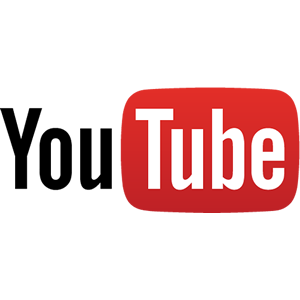
It has become more and more popular for video creators to be sponsored by brands or other types of companies and in feature their logo prominently on the video, usually through a large image placed over top of the video. But YouTube is putting a stop to this practice because they are not getting a cut of the revenue.
While they will no longer allow logos on videos for paid product placements, they do allow creators to add a text notice for the sole purpose of paid product placement notification only. Anything else is prohibited “unless there is a full Google media buyout on the Partner content by the sponsor.”
The sponsor wants to have a title card before the video with their brand name and product information. Is this ok?
We allow text-only title cards where there is Paid Product Placement for the purpose of paid product disclosure only. Graphical title cards, including the use of sponsor logos and product branding, are prohibited unless there is a full Google media buyout on the Partner content by the sponsor. You can contact your Partner Manager for more information and assistance.
YouTube is also banning sponsored pre-rolls that some video creators are including at the start of their videos. The reasoning is because YouTube offers a competing ad product.
Does this mean that I can burn pre-rolls into my videos?
No. The policy does not allow partners to burn advertiser-created and supplied pre-rolls into their content or other commercial breaks where YouTube offers a comparable ad format. This policy is intended specifically for content creators who create ads on behalf of sponsors. If you have an advertiser interested in serving ads specifically against your content, please work with your partner manager to facilitate the transaction. See more information on our policies around third-party embedded sponsorships.
The key to the pre-rolls is that Youtube didn’t have a comparable ad product… until now. Instead, YouTube has launched a new ad creative where sponsors can sponsor a six second pre-roll on the videos, which seems to be YouTube’s answer to banning sponsor image overlays on videos. These creatives, called “product cards”, are run independently from the video, but which also prevents video creators from inserting their own sponsored pre-roll on their videos.
There are many so-called “YouTube stars” you make a significant amount of revenue from sponsorships. And while brands could still technically sponsor by going through Google, the video creators are going to get only a share of that revenue. YouTube generally takes 45% of the revenue generated by their YouTube partner channels.
YouTube is also stating they could disable monetization on some videos that do feature some sort of a paid product placement. They say this is due to potential conflicts with competitors, but instead of just simply not showing competitors, they could disable all monetization on the video completely.
Will YouTube still run ads against these videos?
In some cases a paid product placement can create a conflict with ads that YouTube otherwise sells and serves to partner videos. For example, if you upload a video with brand mentions and product placements for Car Company A, then it would present a conflict to sell ad space around that video to Car Company B. In these situations, YouTube may disable monetisation and promotion on videos with such product placements to protect the value we offer advertisers.
How YouTube plans to police this kind of thing is unknown. But you can be sure that competitors will be itchy on those report buttons, if reporting for sponsorship is an option. Right now, there isn’t an option to report advertising.
Jennifer Slegg
Latest posts by Jennifer Slegg (see all)
- 2022 Update for Google Quality Rater Guidelines – Big YMYL Updates - August 1, 2022
- Google Quality Rater Guidelines: The Low Quality 2021 Update - October 19, 2021
- Rethinking Affiliate Sites With Google’s Product Review Update - April 23, 2021
- New Google Quality Rater Guidelines, Update Adds Emphasis on Needs Met - October 16, 2020
- Google Updates Experiment Statistics for Quality Raters - October 6, 2020
